Aloe aculeata, also known as Red Hot Poker Aloe or Ngopanie, is quickly becoming a favorite among plant enthusiasts. Originating from South Africa, Zimbabwe, and Mozambique, this aloe is turning heads with its unique, spiky appearance and robust growth. It’s not just another aloe; its striking reddish-brown teeth and large, triangular leaves set it apart. Whether you’re looking to add a touch of the exotic to your indoor collection or a resilient beauty to your outdoor garden, Aloe aculeata is a perfect choice.
Appearance of Aloe Aculeata
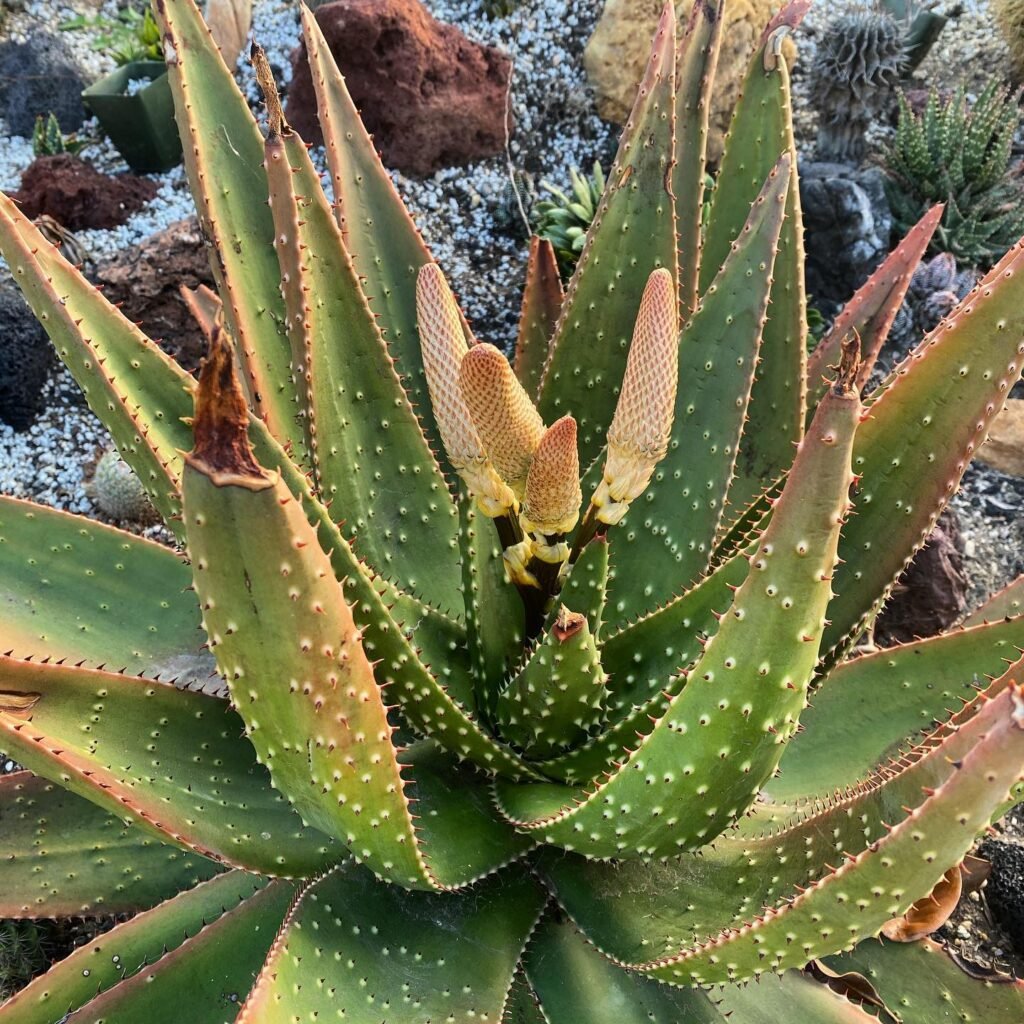
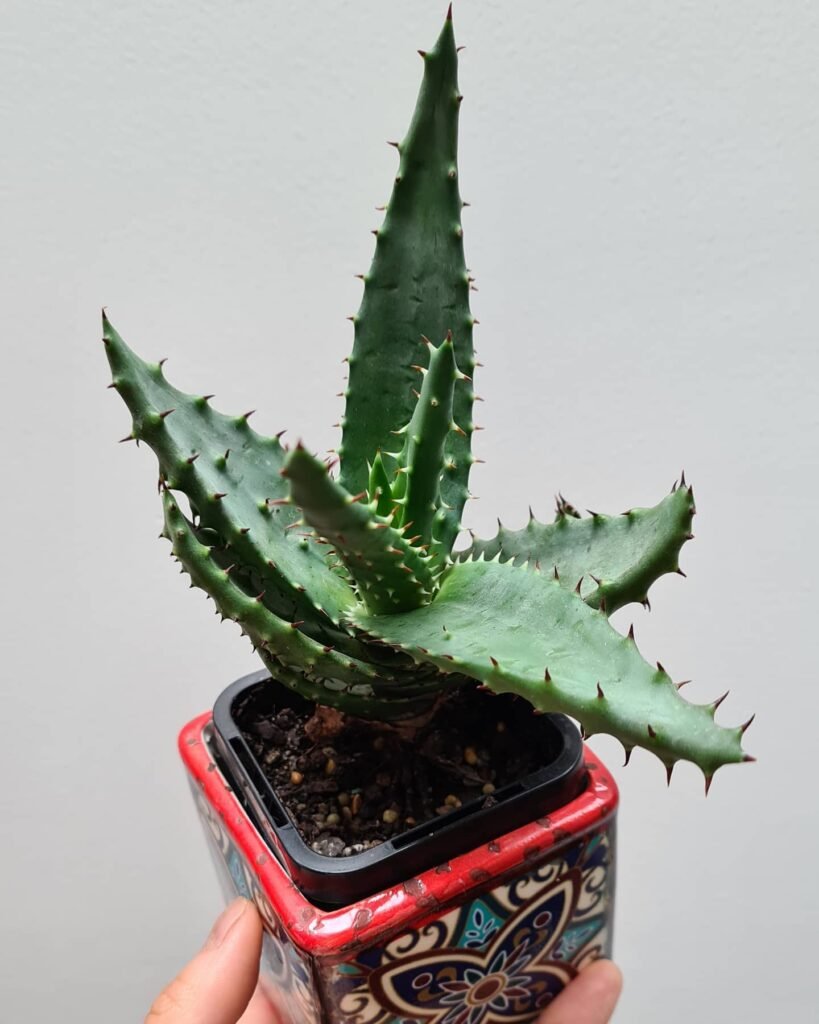
The Aloe Aculeata, affectionately known as Red Hot Poker Aloe, is a striking plant native to South Africa’s Limpopo valley, Mpumalanga, as well as southern and central Zimbabwe and Mozambique. What makes it stand out in the world of succulents are its unique physical characteristics:
- Distinctive Leaves: The Aloe Aculeata boasts long, broad leaves that curve upward, creating a visually appealing rosette. These leaves can grow quite large, adding to the plant’s dramatic appearance.
- Sharp Teeth: The edges of each leaf are lined with sharp, reddish-brown teeth, giving the plant its common name ‘Red Hot Poker’.
- Flower Display: During the winter months, this aloe comes alive with vibrant flowers ranging from reddish orange to yellow, adding a pop of color to your garden during the colder months.
- Growth Pattern: This mid-sized aloe can grow over 3 feet tall and wide, making it a substantial addition to any garden or collection.
The Aloe Aculeata is more than just a plant; it’s a statement piece. Its dramatic appearance and unique features make it a beautiful and eye-catching addition to any space, whether indoors or in a garden.
 Aloe Aculeata is a drought-resistant succulent, making it an excellent plant for xeriscaping and water-wise gardens. Its ability to thrive in dry conditions reflects its adaptation to the arid regions of southern Africa.
Aloe Aculeata is a drought-resistant succulent, making it an excellent plant for xeriscaping and water-wise gardens. Its ability to thrive in dry conditions reflects its adaptation to the arid regions of southern Africa.
Light Requirements for Aloe Aculeata
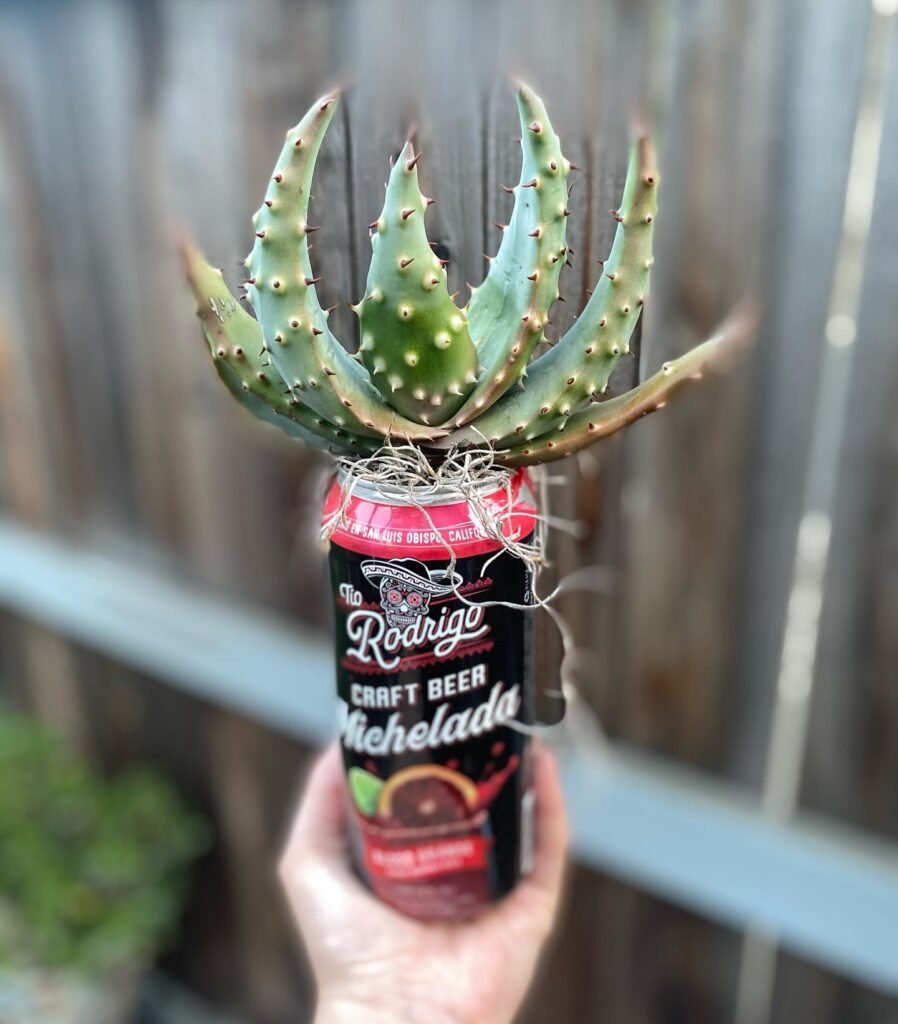
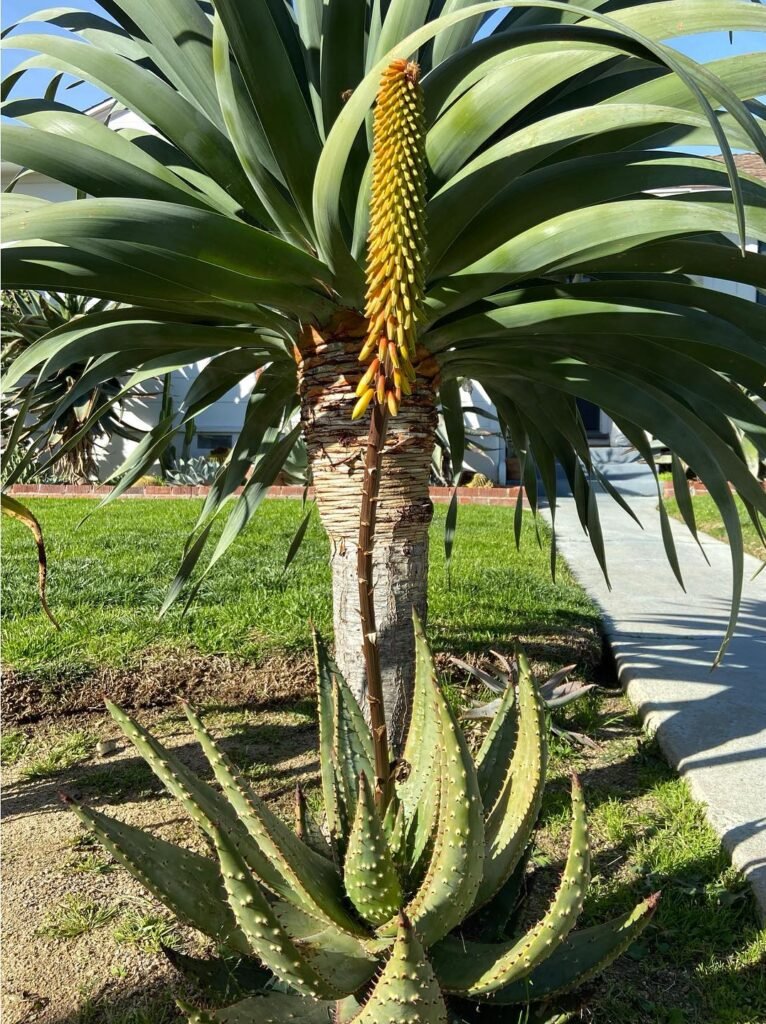
Getting the light right for your Aloe Aculeata is crucial for its health and vibrant appearance:
- Bright Light: This aloe loves bright light. A spot where it can soak up some sunshine is ideal.
- Direct Sunlight: Unlike some succulents, Aloe Aculeata can handle direct sunlight, but it’s good to acclimate it gradually to prevent sunburn.
- Indoors: If growing indoors, a south-facing window is a great spot. The more light, the better for this sun-loving plant.
- Shade Tolerance: While it can tolerate some shade, too little light might hinder its growth and flowering.
By finding the perfect balance of light, your Aloe Aculeata will thrive and show off its unique beauty.

Watering Tips for Aloe Aculeata

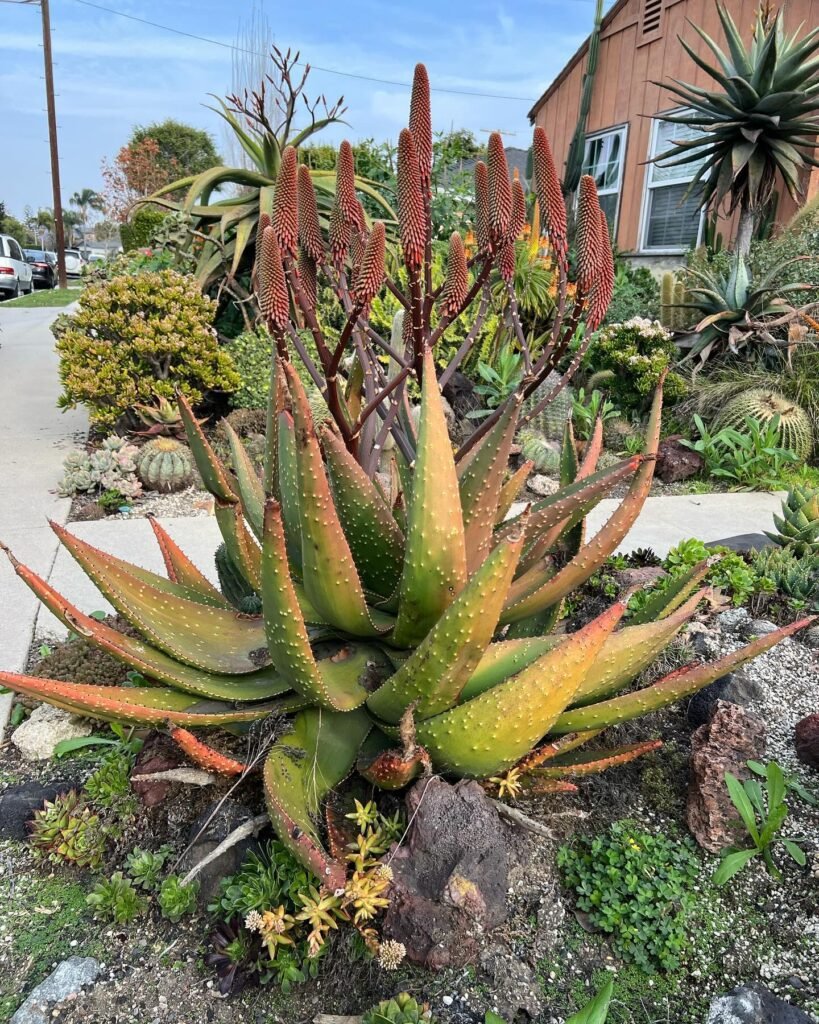
Watering your Aloe Aculeata isn’t complicated if you remember these key guidelines:
- Soil Check: Always check the soil first. If the top layer feels dry, it’s time to water.
- Thorough Watering: Give it a good soak so the water reaches the roots, then allow it to drain completely.
- Winter Care: Cut back on watering in the colder months since the plant won’t need as much.
By sticking to these simple practices, you’ll keep your Aloe Aculeata happy and healthy. Remember, it’s better to under-water than over-water.

Fertilizing and Soil for Aloe Aculeata

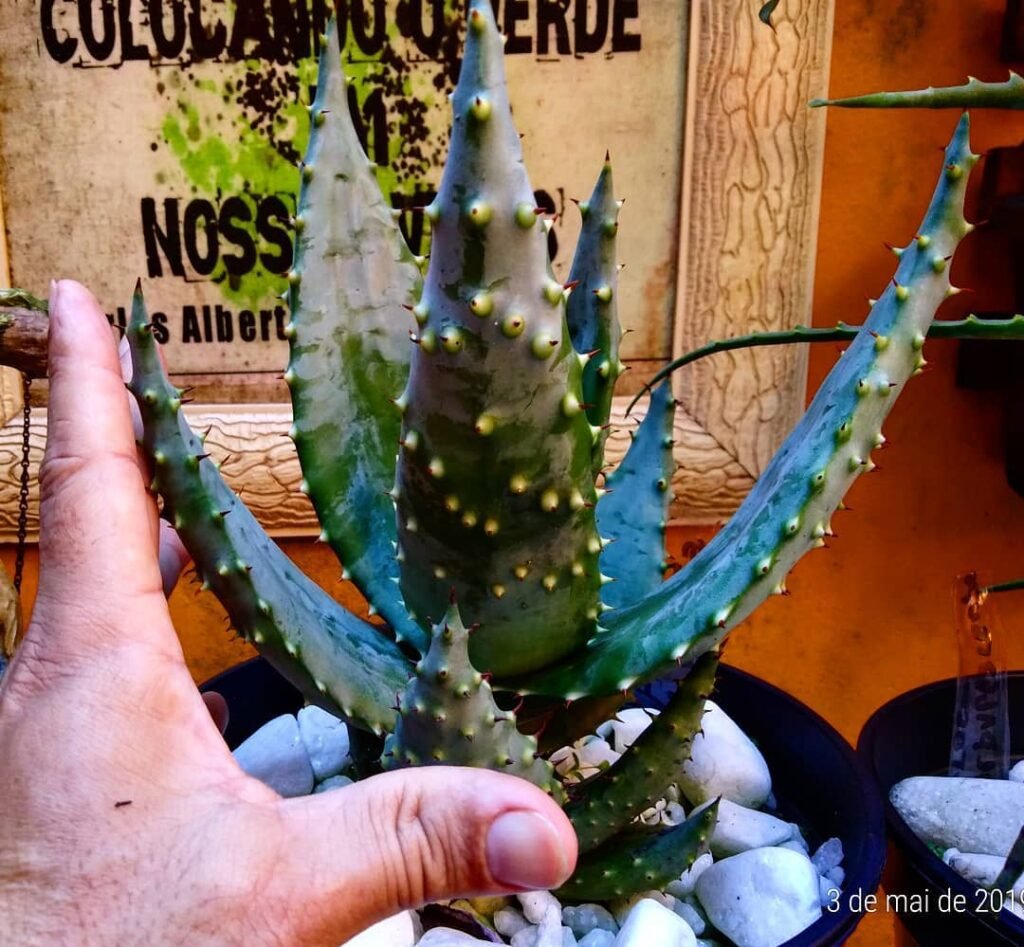
To flourish, your Aloe Aculeata needs the right mix of soil and a touch of fertilizer. Let’s break down what it needs:
| Aspect | Details |
|---|---|
| Soil Type | Well-draining, sandy or gritty mix |
| Fertilizer | Light feeding with a succulent fertilizer during the growing season |
With the right soil and occasional fertilization, your Aloe Aculeata will thrive, showing off its spiky elegance. It’s all about creating the perfect environment for it to grow.

Pruning and Maintenance for Aloe Aculeata
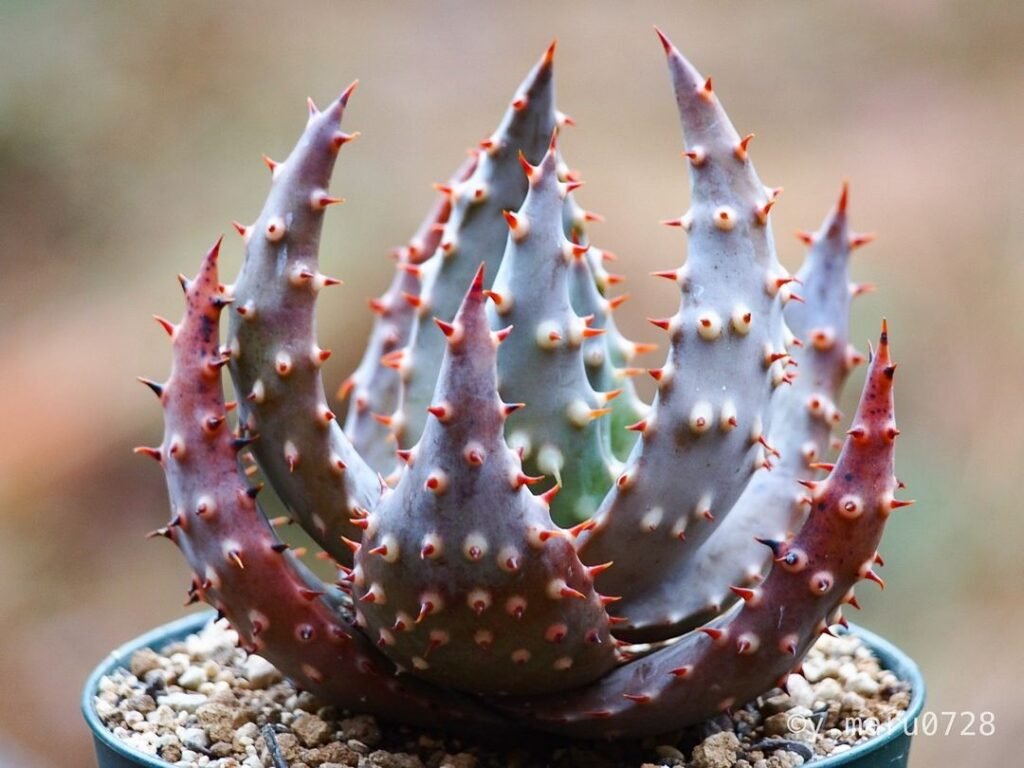
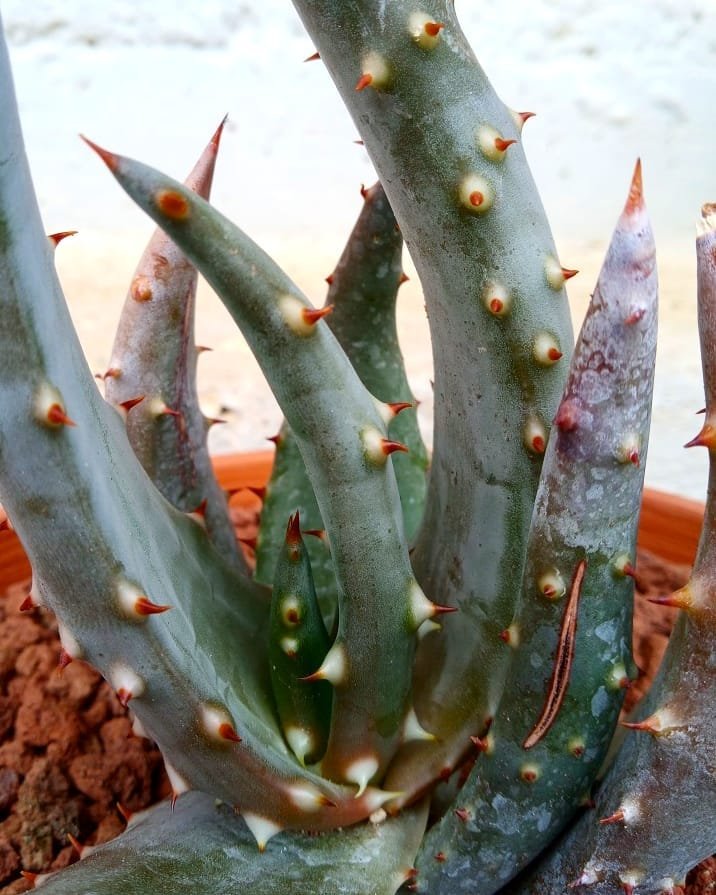
Pruning and maintaining your Aloe Aculeata helps keep it healthy and attractive. Here’s a simple approach:
- Trimming Dead Leaves: Regularly remove any dead or dying leaves from the base of the plant.
- Cutting Spent Flower Stalks: After blooming, cut the flower stalks close to the base to encourage new growth.
- Disease Check: Inspect the plant for signs of rot or disease, particularly in the lower leaves.
- Cleaning: Gently wipe the leaves with a damp cloth to remove dust.
These maintenance tips will keep your Red Hot Poker Aloe looking its best, enhancing its unique spiky charm. Regular attention will help it flourish and be a standout feature in your collection.

Propagating Aloe Aculeata (Red Hot Poker Aloe)
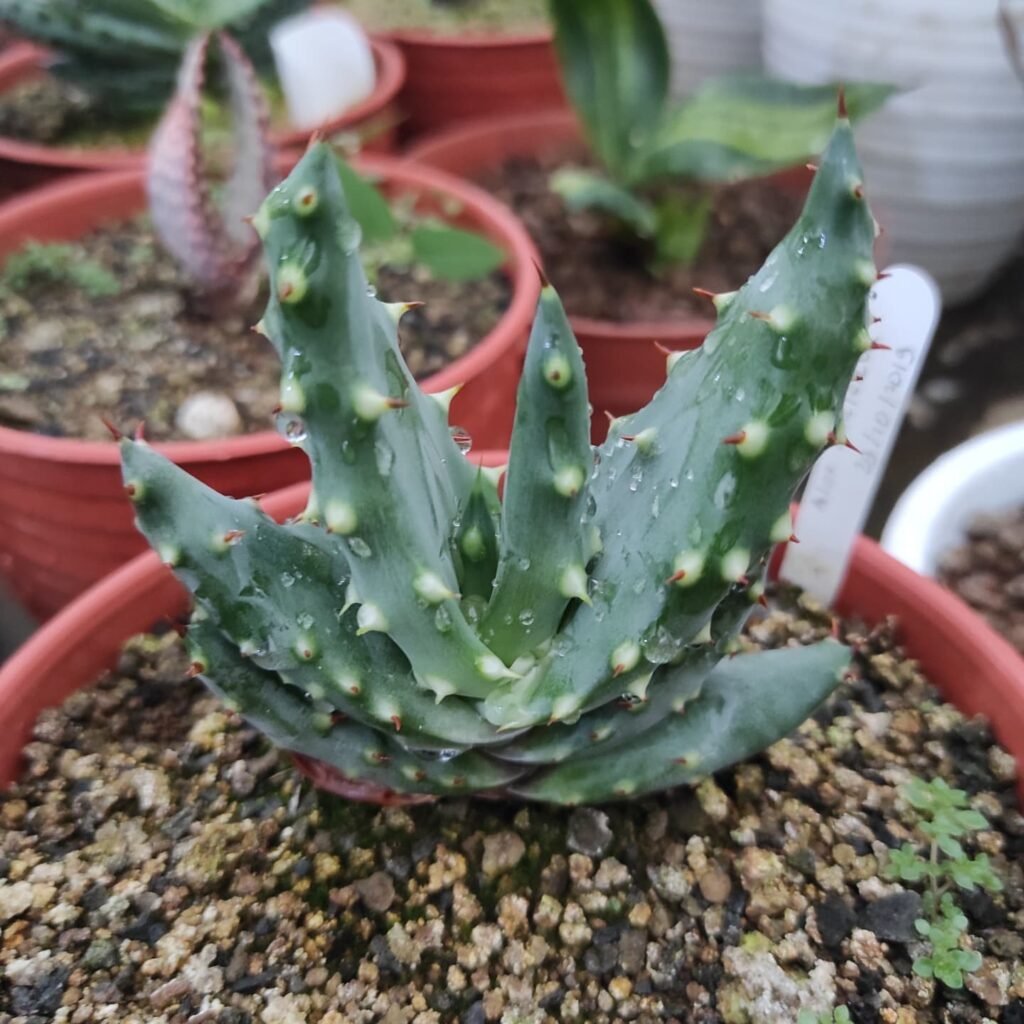

Propagating Aloe Aculeata, or Red Hot Poker Aloe, can be a fun and rewarding way to expand your collection:
- Method: The most effective way is through offsets, also known as ‘pups’, that grow around the base of the plant.
- Separation: Once the pups are a decent size and have their own roots, gently separate them from the mother plant.
- Replanting: Plant these pups in well-draining soil and water them sparingly until they establish themselves.
- Patience: Give them time to adjust and start growing on their own.
Propagating your Aloe Aculeata is an excellent way to spread the joy of this unique plant. Each new pup is a fresh start and a chance to share this spiky wonder with friends or to expand your own succulent garden.

Repotting Tips for Aloe Aculeata
Repotting your Aloe Aculeata (Red Hot Poker Aloe) is a key step in its care, ensuring it continues to grow and thrive:
- Timing: Best done in the spring or early summer, when the plant is actively growing.
- Choosing a Pot: Opt for a pot slightly larger than the current one with good drainage.
- Soil Selection: Use a well-draining, sandy soil mix designed for succulents.
- Gentle Process: Carefully remove the plant, shake off old soil, and repot with fresh soil.
- Post-Repotting Care: Water it lightly after repotting and place it in indirect light.
Repotting isn’t just about giving your plant a new pot; it’s about giving it a new lease on life. With fresh soil and more space, your Aloe Aculeata can continue to flourish, bringing its unique beauty to your space for years to come.
 Aloe Aculeata, known as the ‘Spiny Aloe,’ stands out with its distinctive sharp, reddish-brown spines. Native to southern Africa, it’s not only a striking succulent but also valued for its traditional medicinal uses, similar to other Aloe species.
Aloe Aculeata, known as the ‘Spiny Aloe,’ stands out with its distinctive sharp, reddish-brown spines. Native to southern Africa, it’s not only a striking succulent but also valued for its traditional medicinal uses, similar to other Aloe species.
Helpful Videos about Aloe Aculeata
Dive into the world of Aloe Aculeata with these hand-picked videos! Whether you’re a newbie or just looking to fine-tune your green thumb, these visual guides are packed with tips and tricks. From watering to the perfect soil mix, you’ll find everything to make your Red Hot Poker Aloe thrive.
- Aloe aculeata – grow & care
- Aloe aculeata – Africa’s ‘Red Hot Poker Aloe’
Frequently Asked Questions about Aloe Aculeata

Got questions about caring for your Aloe Aculeata? Here’s a handy FAQ to help you out. We’ll cover all the essentials for this unique succulent, perfect for both new and seasoned plant enthusiasts.
A spiky succulent known for its striking appearance.
Prefers bright light, can tolerate some direct sunlight.
Water when the soil completely dries out.
Well-draining, sandy or gritty soil mix.
Yes, it blooms with reddish-orange to yellow flowers in winter.
Can reach up to 60 cm in height and diameter.
Yes, with adequate light.
Primarily through offsets or ‘pups’.
Spring or early summer.
Mealybugs and spider mites.
Can be toxic to pets if ingested.
Lightly during the growing season.
Prefers warm climates, protect from frost.
Yellowing leaves or root rot.
Remove dead or damaged leaves as needed.
Hope this FAQ helps you in your Aloe Aculeata journey! If you’ve got more queries about this striking plant, feel free to drop them in the comments. Let’s get growing!





